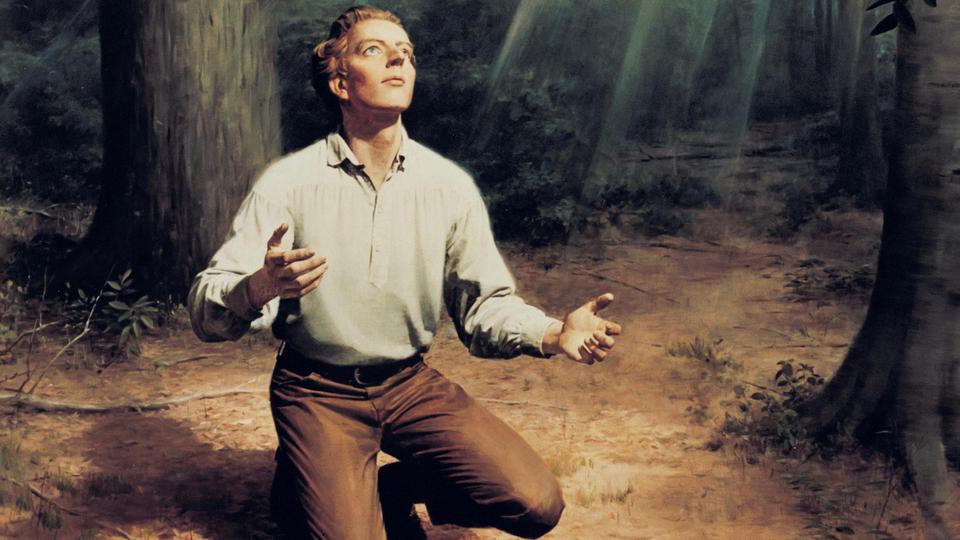
National Geographic’s recent article, “How Joseph Smith Changed American Christianity Forever,” has sparked conversation both inside and outside the Church of Jesus Christ of Latter-day Saints (LDS Church). The piece gives a broad and generally accurate account of Smith’s life: his upbringing in New York’s “Burned-over District,” the visions and golden plates, the founding of the Church, and the controversies that surrounded him until his death in 1844.
While many Latter-day Saints appreciate the attention to their faith’s origins, they also note several places where the article’s framing differs from how Church members understand their own history. Three areas in particular stand out: how the Joseph Smith seer stone is interpreted, what is said about the witnesses to the golden plates, and how the theology of plural marriage is portrayed.
A Fair but Controversial Portrait
To its credit, National Geographic situates Smith within the vibrant religious experimentation of early-nineteenth-century America. That period was full of revivalism, charismatic preachers, and utopian movements. In this context, Smith’s claim to divine revelation was not entirely out of place. The article correctly highlights how his translation of the Book of Mormon and his founding of the Church reshaped the religious landscape.
The piece succeeds in showing that Mormonism isn’t just a fringe idea, but one of the most original American-born faiths. But because Joseph Smith is not only a historical figure but a prophet to his followers, small interpretive choices, like how his visions are described or which sources are emphasized, differ from the general Latter-day Saint impression.
Seer Stones and Revelation
One section of the article deals with Smith’s youthful involvement in treasure-seeking and his use of a “seer stone.” It describes how he and others participated in folk divination practices common on the frontier, implying that his later prophetic claims grew out of those superstitions.
Latter-day Saints see this history differently. While they acknowledge that Smith came from a culture where such practices existed, they interpret his seer role as a unique, divine calling rather than a consequence of his culture. The Church has published open discussions of these early experiences, framing them as part of Smith’s preparation to receive revelation. In this view, the seer stone used in translating the Book of Mormon was not a magical talisman, but an instrument of inspiration similar to the biblical Urim and Thummim.
What looks to secular historians like superstition appears to believers as an early manifestation of Smith’s prophetic gifts. The National Geographic article hints at this possibility, but leans toward a skeptical interpretation. For some Latter-day Saints, that misses the essential religious meaning behind the Joseph Smith seer stone.
The Witnesses to the Golden Plates
Another significant difference lies in how the article describes the golden plates from which Smith said he translated the Book of Mormon. It claims “no one other than Smith ever saw the gold plates, though others said they witnessed them in visions.”
This statement understates an important feature of early Latter-day Saint history: the existence of eleven official witnesses. Three men—Oliver Cowdery, David Whitmer, and Martin Harris—testified that an angel showed them the plates. Eight others, including several of Smith’s family members, declared they physically handled and examined the plates. Their signed testimonies have been published with every edition of the Book of Mormon since 1830.
Even after some of these men left the Church, none retracted their witness. For Latter-day Saints, this collective testimony is important evidence that the plates were real, tangible objects. By suggesting that only Joseph Smith ever saw them, the National Geographic article gives a misleading impression of what early participants actually claimed.
To historians, of course, the question of what these men really saw is open to interpretation. But for believers, their consistent statements form a core part of the faith’s historical foundation.
The Theology Behind Plural Marriage
Perhaps no aspect of Joseph Smith’s life generates more controversy than Joseph Smith polygamy. The article accurately notes that he married multiple women, some quite young, and that the practice provoked deep internal and external opposition. Where the Latter-day Saint perspective diverges is in why Smith introduced it.
The National Geographic piece frames Joseph Smith wives largely as a social or political experiment, quoting a historian who says Smith “connected the extent of one’s eternal glory to the size of one’s earthly family.” While that captures part of the logic, Latter-day Saints emphasize that Smith’s teaching on plural marriage came from revelation recorded in Doctrine and Covenants 132, a text viewed as scripture by the Church.
In that revelation, plural marriage was presented not as a path to earthly power, but as part of a broader theology of eternal families and exaltation—the idea that marriage and family relationships continue after death. For believers, this practice, though temporary and now discontinued, was about obedience to divine commandment rather than ambition.
Modern Latter-day Saints acknowledge the difficulty and pain associated with this period, but see it as one chapter in a much larger story of radical faith and sacrifice. The National Geographic article touches on these complexities, but tends to emphasize the sociological aspects over the spiritual rationale.
Why These Differences Matter
Some might wonder why these interpretive differences matter. The answer lies in what Joseph Smith represents. For Latter-day Saints, he is not just a social revolutionary, but their “Prophet of the Restoration.” When secular historians focus only on cultural context and social dynamics, they can inadvertently flatten the spiritual experiences that inform believers’ perspectives. Conversely, purely devotional accounts sometimes ignore or sanitize legitimate historical complexities. The healthiest conversation lies somewhere in between.
Bridging Faith and Scholarship
In recent years, the LDS Church itself has embraced a more deliberate, open discussion of its history. Church-sponsored essays and publications explore topics like seer stones, translation methods, and Joseph Smith polygamy with transparency. This openness allows for more informed dialogue between scholars and believers.
Readers who approach these discussions with curiosity rather than cynicism can appreciate that Joseph Smith’s story was both deeply human and profoundly religious. His story is inseparable from the broader narrative of American religious innovation, but it also points beyond that context to claims of divine revelation that millions still believe today.
Conclusion
In the end, National Geographic’s portrayal of Joseph Smith offers a thoughtful introduction to a complex and fascinating figure. It succeeds in showing why his movement permanently altered the American religious landscape. Yet from a Latter-day Saint perspective, some nuances deserve further clarification.
Recognizing these differences doesn’t diminish the article’s value; it enriches the conversation. When secular scholarship and faith traditions engage one another honestly, both gain a deeper understanding of how history and belief intertwine.
Joseph Smith remains a figure who defies easy categorization, but his impact on American Christianity is undeniable. For believers, he was a restorer of divine truth; for historians, he was a uniquely American innovator. Bridging those perspectives allows for a more complete view of the man and the movement that continues to shape the spiritual landscape.

By Todd Noall, Source Expert
Todd Noall is an author and religious scholar at Mormonism Explained with a focus on the history and theology of religion.

Fact Checked by Mr. Kevin Prince, Source Expert
Kevin Prince is a religious scholar and host of the Gospel Learning Youtube channel. His channel has garnered over 41,000 subscribers and accumulated over 4.5 million views. Mr. Prince also created the Gospel Learning App, a reliable platform where individuals seeking truth can access trustworthy answers to religious questions from top educators worldwide.
About Mormonism Explained
Mormonism Explained is a resource that was designed to provide objective and factual information about Mormonism, its history, doctrines, and policies. Our team of researchers consults experts and primary sources to present factual information on a variety of topics relevant to the Mormon Church.
Tags
